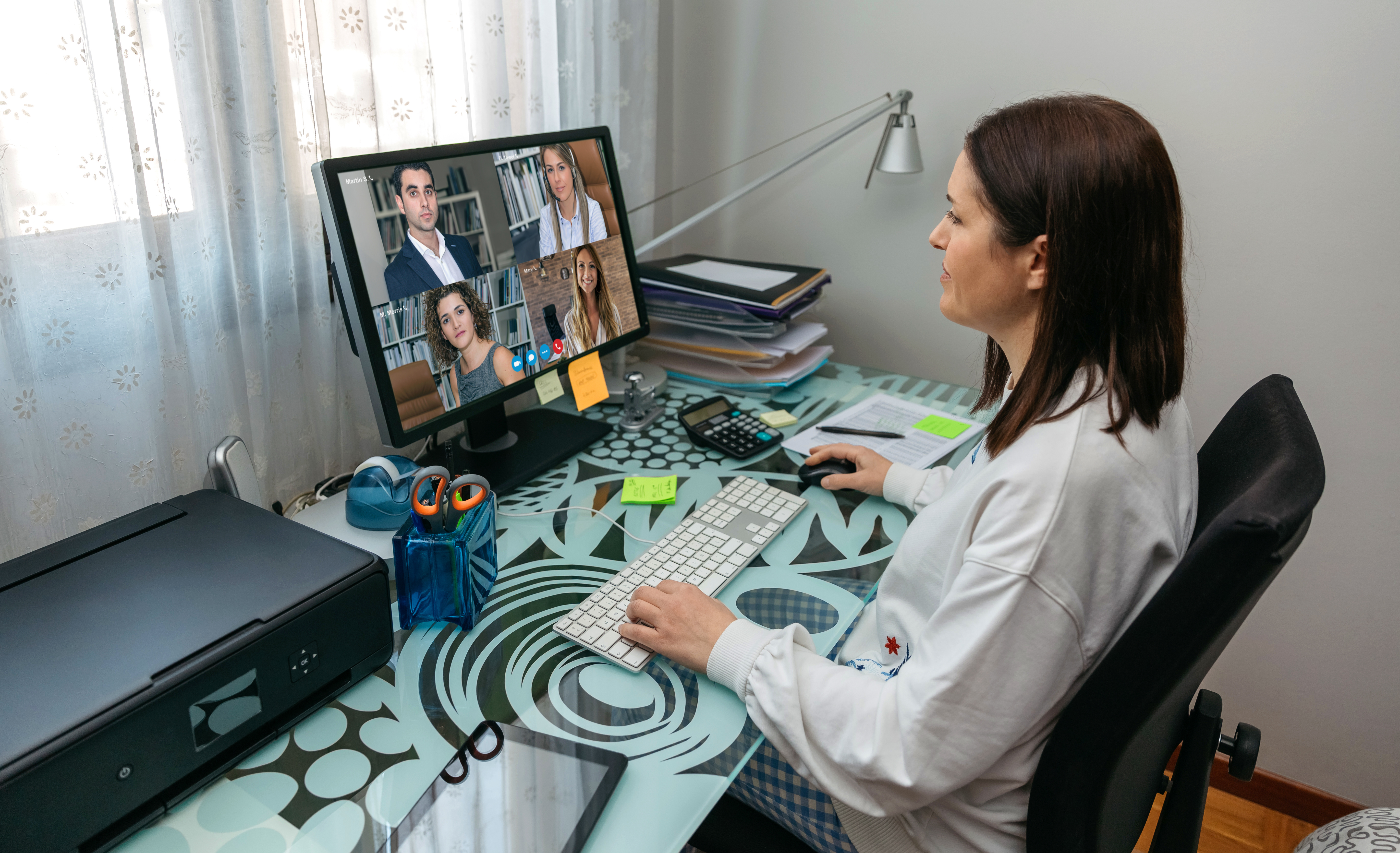Remote Working, Risks and Opportunities
Remote working can be a source of performance if the risks are well managed, but can multiply the problems if not.

The coronavirus crisis and forced lockdown have thrown us all into new working conditions. Even the most reluctant remote workingorganizations have had to take the plunge sooner than expected.
A dynamic of positive collaboration?
A recent ADP research study has highlighted the correlation between employee engagement and the frequency of remote working.
As an accompanist of very often “despatialized” multicultural teams, I discovered the “virtuous reflexes” put in place to create a dynamic of positive collaboration and new value for the functioning of organizations.
The constraint of distance working combined with cultural difference, usually understood as a risk factor, can paradoxically become a learning lever for the company.
Risks and conditions for successful remote working
How can these teams perform? What are the risks involved, and how to turn them into opportunities?
Five important conditions need to be identified to measure the degree of maturity of a “despatialized” team.
1. Becoming aware of our usual modes of operation
Taking a step back on our operating modes is the first essential step to avoid frustrations and then determine new rules to work well together.
Indeed, to modify our behaviors, we need to identify and understand them. Being in confinement might be an opportunity to take a look at ourselves in the mirror and ask ourselves these questions:
- What are our preferred modes of communication?
- How do we make decisions within the team?
- How are the roles defined and distributed?
2. Assess the risks of remote working
Remote working modifies our operating modes and involves three major risks:
- Isolation
- Fragmentation
- Dispersion
Physical remoteness changes our social relationships and can lead to a feeling of loneliness: no more coffee machine or lunch to talk about our weekends and also hobbies outside working hours.
Without access to context and non-verbal language, we perceive only part of the information thus missing out on important elements.
Finally, the impact on motivation should not be overlooked: in the absence of interactions between the members of the team, we risk miscommunication.
We must, therefore, be aware that natural interactions are no longer at play to prevent the risks of poor communication.
- Have we discussed the constraints of the members of the team (dependent children or elderly parents, household equipment, sufficient connections, etc.)?
- Have we implemented sustained communication on the management of the new situation?
- Have we planned survey tools to measure the social climate and identify risk within different situations?
3. Reinventing and cultivating the link at a distance
When physical contact is not possible, communication becomes even more difficult. It must then be reinvented to create opportunities for informal exchanges, even if it may seem a bit superficial.
Remote tools allow you to inhibit speech and sometimes we have more audacity to share personal information.
The “team weather” that “despatialized” managers practice to take the temperature of the social climate allows us to effectively share our successes and our emotions.
- How do we cultivate this link from a distance?
- Have we planned moments of conviviality at a distance not only focused on work?
- Do meetings allow everyone to express themselves?
- Have we set up collaborative sessions between the members of the team in a transversal way and not only in the presence of the manager?
4. Clearly define roles and objectives
Working remotely often reveals the dysfunctions within the teams and requires great clarity of the messages.
Verbal communication takes precedence and leaves little room for the unspoken. If you want to boost the efficiency of your teams, be specific about the expected results and the operating mode to be established between each member.
Micro-management becomes counterproductive and can have a negative effect on motivation. It is more effective to support the progress of the team by offering help rather than trying to check and control everything.
Many collaborative tools allow you to communicate on the progress of projects without becoming a “reporting” tool.
- Have we defined and communicated to all team members their objectives (SMART)?
- Do we know exactly what other people are doing and what impact does our work have on that of the team?
- Do we communicate regularly on the progress of projects and do we celebrate successes in a cross-functional way and not only in the presence of the managers?
5. Know our respective expertise, our strengths, our weaknesses, our desires, our reluctance
One of the most common causes of demotivation might be underemployment, feeling like you’re doing work with no added value.
Diversity of expertise is a real asset for the organization and not fully using a person’s skills can lead to their withdrawal. It is therefore important to take the time to know each other’s experiences.
- Do we know the background of our colleagues?
- Do we have a clear idea of their skills?
- Do we know what they like or don’t like to do?
- Are we aware of our weaknesses?
- Do we dare to ask for help?
Recreating a new bond of trust
Learning from this experience of remote work, even if it feels forced and difficult, can become a real opportunity for companies. This is a unique opportunity to recreate a new bond of trust.
This is not an easy task because it requires a certain level of maturity and an effort of introspection to understand who we are and how we function. And yet this is exactly what multicultural and “despatialized” teams do, aspiring to go beyond the spatial and cultural distance.
In the current “post-Covid” circumstances, remote working cannot be decreed as a logical consequence due to confinement. It must be organized according to companies, trades, situations. It is, for example, difficult to integrate a new employee remotely, …
Some companies have also undertaken to be accompanied and offer training to their employees to successfully perpetuate remote working. It is indeed only after having identified the risks, weighing the pros and cons, finding solutions to the difficulties generated by distance, that we can set up an organization adapted to different contexts with precise rules and transparent.
